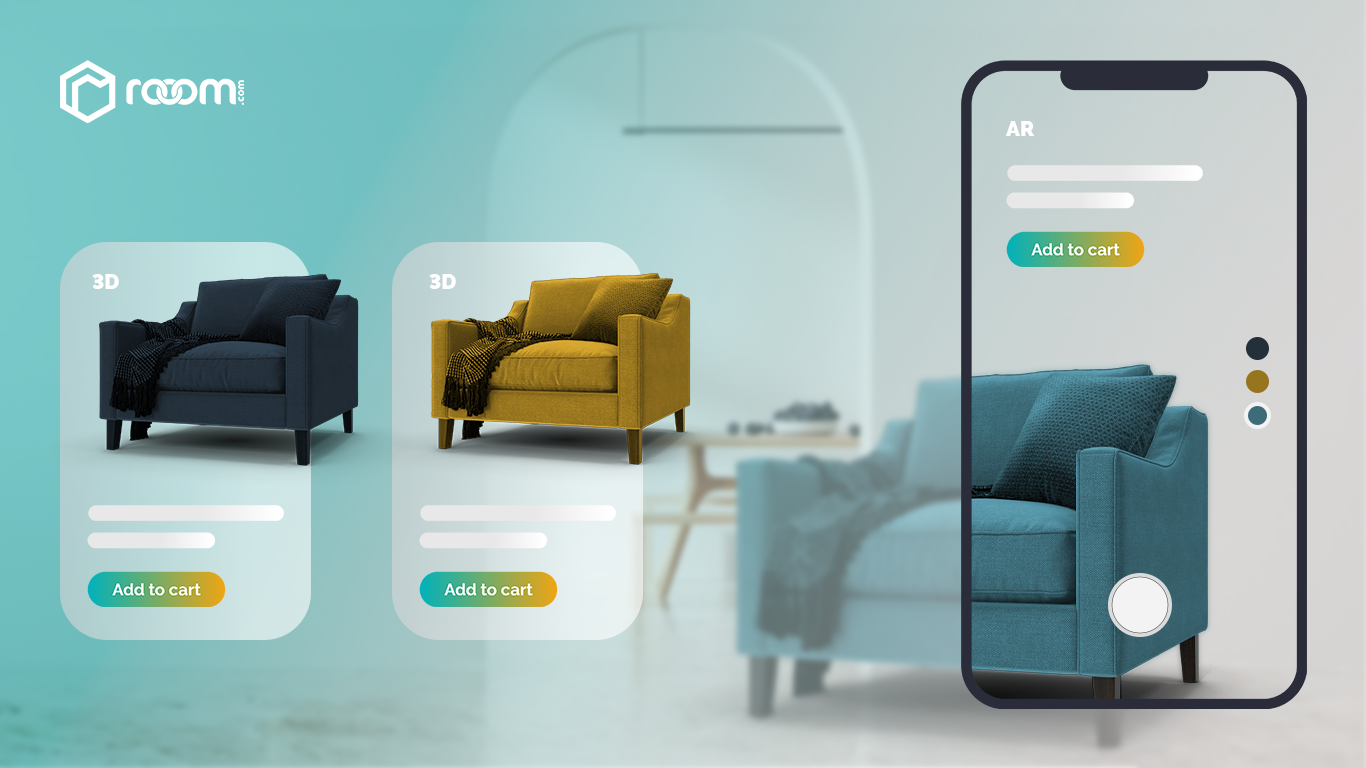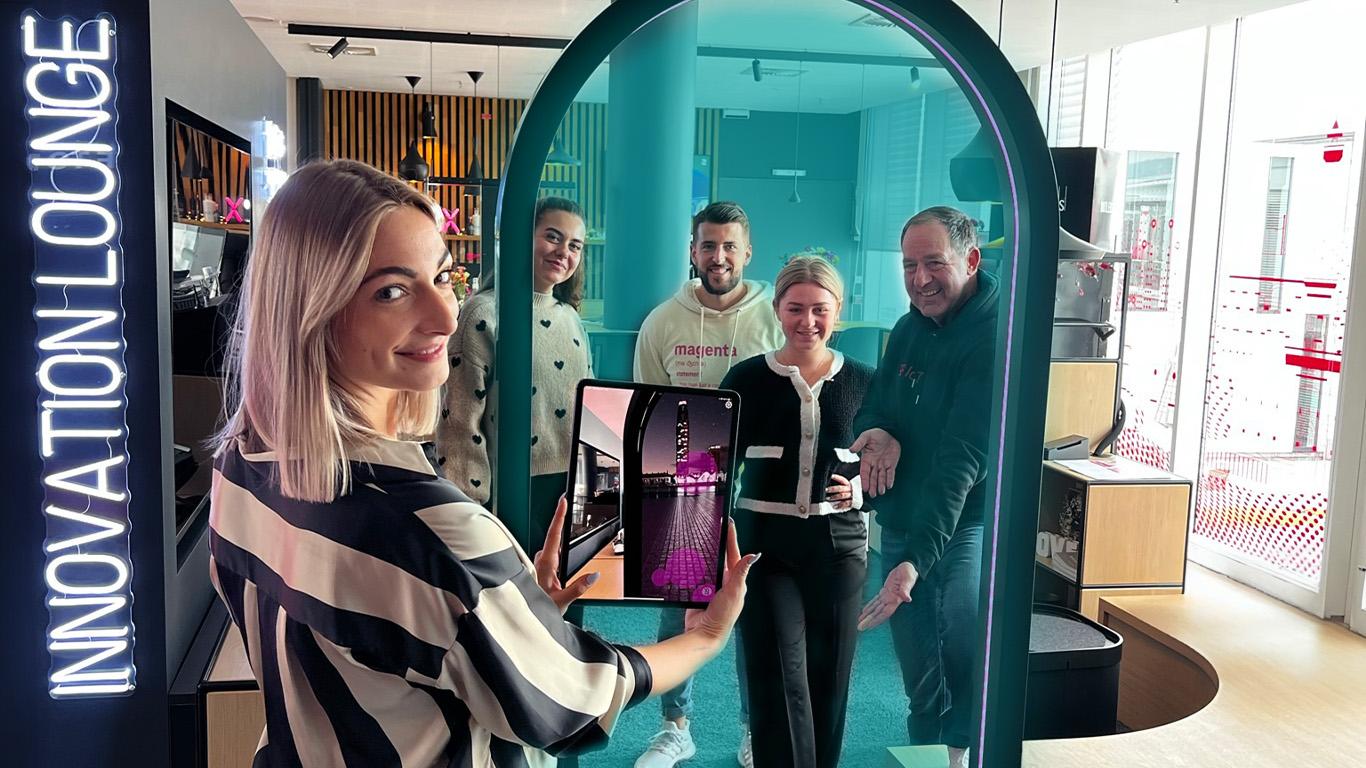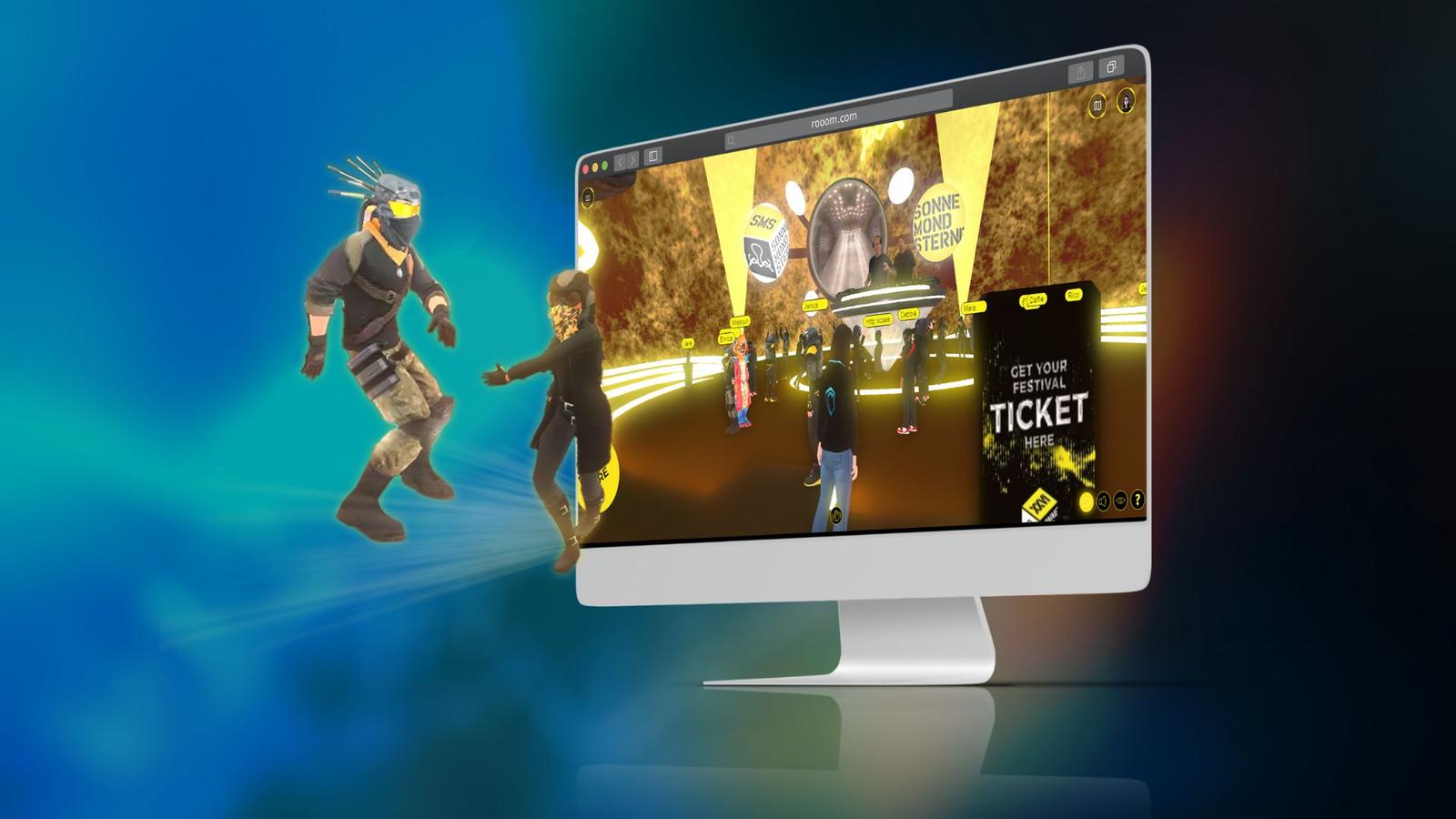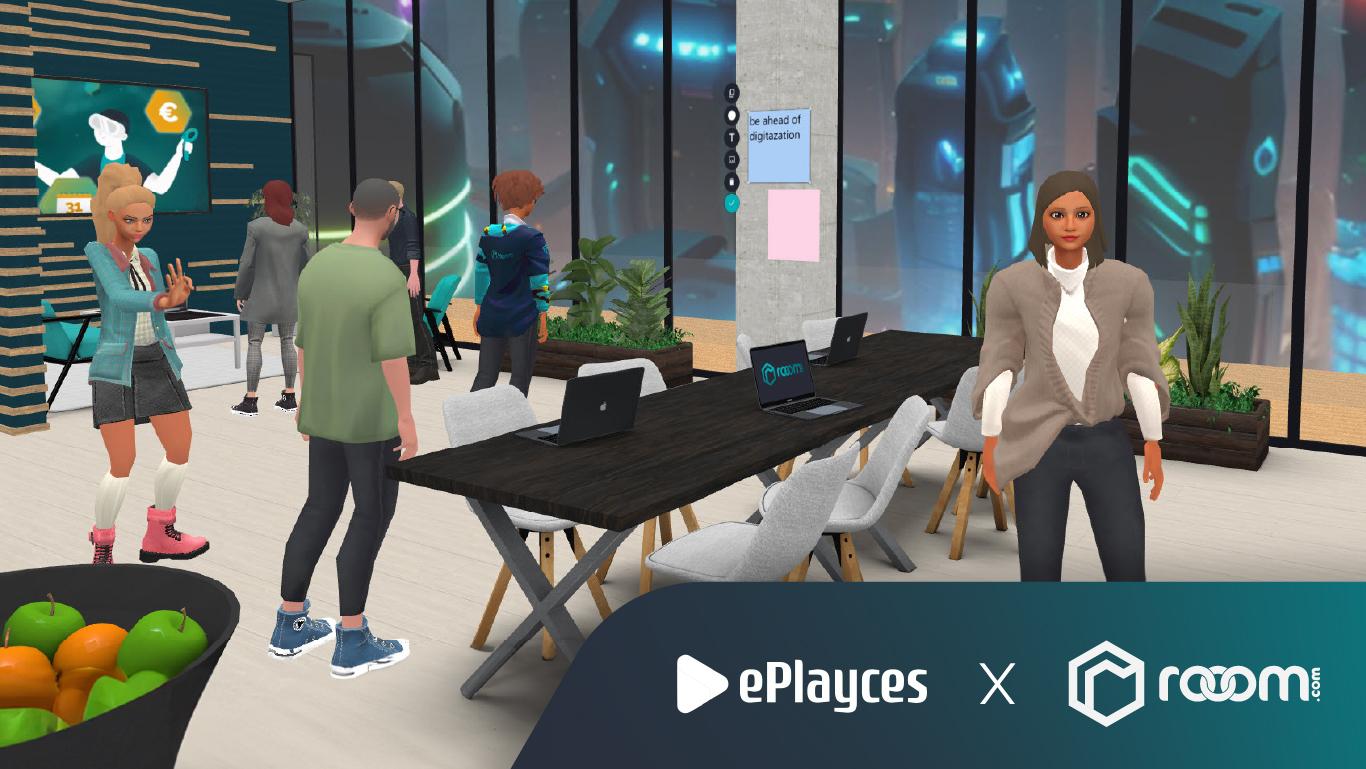Blog
Digital reskilling – How can it look like?

- Hot Topics
- How to Metaverse
- Blog
If you're reading this blog post, you're probably wondering how you can digitally design training measures in your company and what digital reskilling and upskilling might look like today. We'll tell you, but let's start at the beginning: why are smart e-learning solutions becoming more and more important for companies? What's the problem? The world of work has changed dramatically in recent years with the rise of automation and AI. If you want to remain competitive, you have to adapt and find ways for targeted employee retention. Digital Upskilling and reskilling can be a good solution to solve this problem.
Shaping education digitally and remaining competitive
The job market is transforming at a breathtaking speed. Skill sets that are needed today are not yet available on the market. And for the most part, schools, universities and training companies are not yet able to teach new specialists the skills they will need in the future. Many companies are therefore focusing on providing their employees with targeted support in quickly acquiring new skills. For this reason, digital training is becoming increasingly important for the success of companies.
By investing in the development of their employees, companies can ensure that they have the skills and knowledge they need to succeed in today's rapidly changing world of work. Traditional offers such as educational leave or seminars can impart important knowledge, but after attending, learners often find it difficult to transfer this knowledge into practice. So other solutions are needed to counter the shortage of skilled workers.
According to a survey conducted in 2022¹, 74% of the employers surveyed agreed that the shortage of skilled workers is currently the biggest challenge facing companies. Therefore, it is not only about training existing employees, but also about increasing the attractiveness for new talents through good upskilling and reskilling offers.
What does reskilling mean?
While upskilling is about expanding the competencies of employees, for example in areas such as compliance or work structuring, reskilling is about training personnel for completely new roles. This can take a year and is almost like a second degree. But it provides the company with the skills it needs to compete successfully in the marketplace.
Reskilling and upskilling are taking place on the one hand in specialist topics such as software training, data protection, current legislation, blockchain or data science. In particular, however, there are also increasing demands on the interdisciplinary skills of employees, such as the ability to work in a team, problem-solving skills, self-direction, leadership or agile working methods. For this purpose, there are numerous offers inside and outside of companies to digitally design further education, e.g., via content platforms such as LinkedIn Learning. These usually offer high-quality video courses and provide a lot of valuable input, but they also have clear weaknesses.
What do common upskilling solutions do?
Digital learning offerings (e-learning) provide an easy way to re-skill and upskill employees. The learning units are provided either via an in-house LMS (Learning Management System), an LXP (Learning Experience Platform) or via external content platforms such as LinkedIn Learning. However, these courses predominantly use classic forms of passive knowledge transfer: they are often video lectures in which experts explain specialist topics and new content or methods, or highly guided linear learning modules that must be worked through one after the other.
Learners complete the learning units on these platforms in a passive learning setting. There is little or no active engagement with the content. Pure video consumption is stereotypical, monotonous and uniform. After completing a large number of learning units or videos, learners find it increasingly difficult to remember the content. The concrete transfer of learning to one's own everyday work is even less successful. The spatial-visual component is missing, and creativity and reflection in the team also come up short. A good e-learning solution for companies must offer more in order to meet the demands of personnel development 4.0.
When is digital learning successful?
Findings from teaching and learning theory prove that people can learn most effectively if
- content is very well curated and prepared,
- immersive, spatial-visual anchors are created, and
- an exchange can take place in co-creative reflection sessions.
Only by applying these three elements are the best possible frameworks for effective learning provided. Video platforms are therefore not permanently suitable as a central learning offer. Smart learning must be designed interactively and individually.

The solution: Individualized learning offerings
Studies suggest that personalized learning options are much more effective than the classic standard formats¹. It is true that 89% of respondents said they were satisfied with their standardized training, and 86% were also able to acquire good theoretical knowledge. But when it came to applying that knowledge in the real world and making a positive impact on the business, scores dropped. Only 79% said they actually applied what they learned in their daily work, and only 73% believed the new knowledge would really help the company succeed.
Personalized learning options, on the other hand, consistently scored better - especially when it came to applying what they learned to daily business and making a real difference. So when it comes to improving people's skills in a practical way and positively impacting business success, we should personalize digital training.
Upkilling and reskilling with rooom
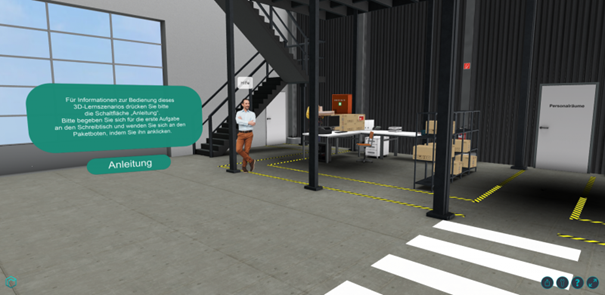
One way to ensure intensive engagement with the learning content is to use interactive Metaverse Smart Learning environments. We at rooom have many years of experience, both in the development of Metaverse environments and real know-how when it comes to digitalization and innovative learning concepts. We not only support the development of re-skilling and upskilling solutions, but also accompany companies in the implementation of smart learning journeys in the metaverse.
In our atmospheric learning landscapes, which follow a visual guiding theme of your choice, learners can go on their own discovery tour. This makes the learning journey an exciting experience and the content remains in the memory for a long time. We easily integrate existing or specially created multimedia content (such as PowerPoint slides, PDFs, web-based training, videos, podcasts and websites) from various sources.
Learners can explore smart learning environments as individualized avatars with voice chat capabilities. These provide a powerful tool to support collaborative learning experiences in the metaverse. They can facilitate communication, enable conversations and direct collaboration, increase engagement, and personalize learning. This enables more effective and efficient learning outcomes.
Discover a wide variety of HR Solutions
In addition to upskilling and reskilling, Metaverse solutions can also be powerful tools in the areas of onboarding, recruiting and team building.
This is what digital upskilling with rooom can look like:
Example 1:
For a compliance training course, learners could find themselves in a courthouse. An interactive exhibition on the topic of "Compliance" awaits them in the foyer. A curated collection of material consisting of technical articles, videos, employee stories, learning snacks, and interactive tasks can be discovered independently within 45 minutes using guiding questions. Learners then meet the team in the courtroom. As part of a (serious) escape game, they and their team must now try to reach the correct verdict within 15 minutes in order to be able to leave the courtroom again. For this purpose, clues and tasks are distributed in the room itself, which contribute to the solution. Once the solution has been found, the judge can be projected as an AR avatar onto the participants' desks, where he or she reads out the reasons for the verdict.
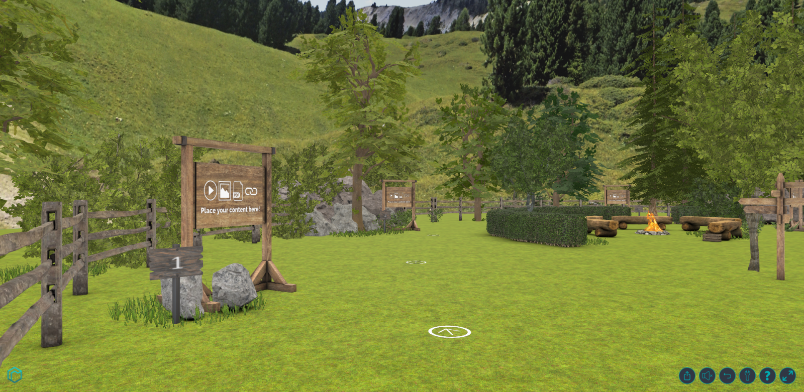
Example 2:
On the topic of team development, the team could sit around a campfire in a virtual forest. The crackling fire is a great place to reflect, hold a retro and exchange ideas.
Example 3:
On the topic of leadership, the managers discover a Smart Learning Island together. In the introduction round, the collaboration area and the presentation mode, they acquire the necessary skills on the topic of leadership in a live online training session.
Conclusion - Continuing Education in the Metaverse?
Designing training digitally and finding individual e-learning solutions for companies is becoming increasingly important in the course of digital transformation. Companies should take into account findings from learning and teaching research. Simply providing a collection of videos or quizzes will not ensure long-term learning success. To ensure lasting business success and attract new talent, interactive digital training is needed - HR development 4.0. Instead of classic passive knowledge transfer, active learning experiences with a wow factor should be at the heart of the learning and development strategy. rooom Metaverse worlds as smart virtual learning environments offer sufficient spatial-visual stimuli to enable employees to develop their skills and ensure learning success in the long term.
Start digitizing your re- & upskilling
Leverage the expertise of our Smart Learning team and find the right Metaverse solution for training, retention and talent acquisition.
